Related Research Articles

Augustus Edwin John was a Welsh painter, draughtsman, and etcher. For a time he was considered the most important artist at work in Britain: Virginia Woolf remarked that by 1908 the era of John Singer Sargent and Charles Wellington Furse "... was over. The age of Augustus John was dawning." He was the younger brother of the painter Gwen John.

Gerald Leslie Brockhurst was a British painter and etcher.
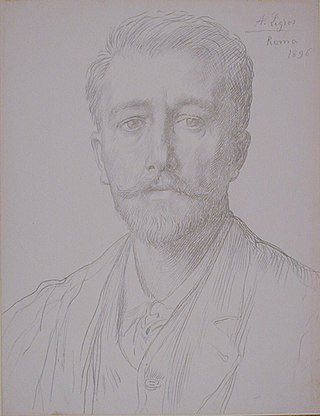
Sir Charles Holroyd RE was an English painter, original printmaker and curator during the late Victorian and Edwardian eras up to and including the First World War. He was Keeper of the Tate from 1897 to 1906, Director of the National Gallery from 1906 to 1916 and Assessor (Vice-President) of the Royal Society of Painter-Etchers & Engravers from 1902 to 1917.
John Northcote Nash was a British painter of landscapes and still-lives, and a wood engraver and illustrator, particularly of botanic works. He was the younger brother of the artist Paul Nash.

Edmund Blampied was one of the most eminent artists to come from the Channel Islands, yet he received no formal training in art until he was 15 years old. He was noted mostly for his etchings and drypoints published at the height of the print boom in the 1920s during the etching revival, but was also a lithographer, caricaturist, cartoonist, book illustrator and artist in oils, watercolours, silhouettes and bronze.
Salomon van Abbé, also known as Jack van Abbé or Jack Abbey, was an artist, etcher and illustrator of books and magazines.
Ernest Stephen Lumsden, was a distinguished painter, noted etcher and authority on etching.

The Royal Society of Painter-Printmakers (RE), known until 1991 as the Royal Society of Painter-Etchers and Engravers, is a leading art institution based in London, England. The Royal Society of Painter-Etchers, as it was originally styled, was a society of etchers established in London in 1880 and given a Royal Charter in 1888. Engraving was included within the scope of the Society from 1897, wood-engraving from 1920, coloured original prints from 1957, lithography from 1987 and all forms of creative forward-thinking original printmaking from 1990.

Mortimer Luddington Menpes was an Australian-born painter, author, printmaker and illustrator.

Robert Walker Macbeth was a Scottish painter, etcher and watercolourist, specialising in pastoral landscape and the rustic genre. His father was the portrait painter Norman Macbeth and his niece Ann Macbeth. Two of his five brothers, James Macbeth (1847–1891) and Henry Macbeth, later Macbeth-Raeburn (1860–1947), were also artists.
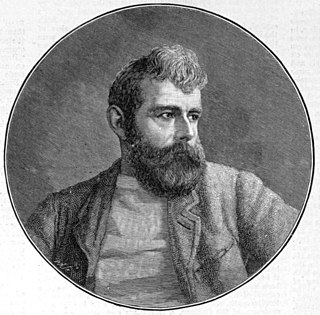
William Lionel Wyllie, also known as W. L. Wyllie, was a prolific English painter of maritime themes in both oils and watercolours. He has been described as "the most distinguished marine artist of his day." His work is in the Tate, the Royal Academy, the Imperial War Museum, the National Maritime Museum, the National Museum of the Royal Navy, and many other institutions around the world.

Edward Thomas Daniell was an English artist known for his etchings and the landscape paintings he made during an expedition to the Middle East, including Lycia, part of modern-day Turkey. He is associated with the Norwich School of painters, a group of artists connected by location and personal and professional relationships, who were mainly inspired by the Norfolk countryside.

Henry Matthew Brock was a British illustrator and landscape painter of the late nineteenth and early twentieth century. He was one of four artist brothers, all of them illustrators, who worked together in their family studio in Cambridge.
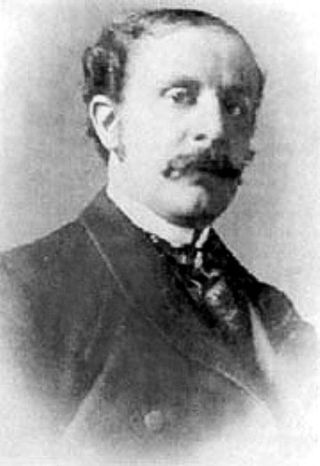
Henry Gillard Glindoni R.B.A., A.R.W.S. was a British painter noted for historical genre works.

John Finnie was a Scottish landscape painter and engraver. He was best known in London for his original mezzotint engravings of landscape, and exhibited at the Royal Academy and the Royal Society of Painters, Etchers, and Engravers. When he moved to Towyn in northern Wales he painted numerous landscape paintings of places in the Capel Curig area, such as Snowdon. He was headmaster of the Liverpool Mechanics Institute and School of Art from 1855 until 1896. Several paintings related to him are on display in the Walker Art Gallery in Liverpool and the Portsmouth Museum.

Henry Charles Brewer (1866–1950) was a British painter well known in the first half of the 20th century for his watercolour landscapes and architectural paintings.
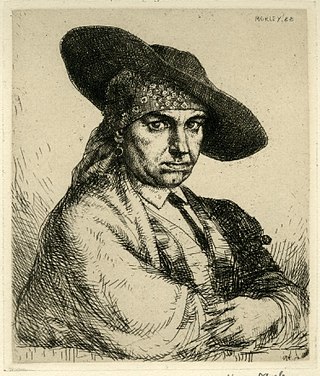
Harry Morley was a British painter, etcher and engraver known for his classical and mythological compositions.
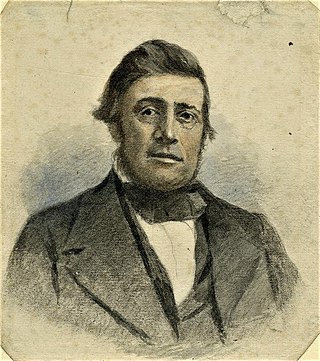
Thomas Lound was an amateur English painter and etcher of landscapes, who specialised in depictions of his home county of Norfolk. He was a member of the Norwich School of painters, and lived in the city of Norwich all his life.
James Thomas Armour Osborne RE (1907-1979) was a British painter, original printmaker, etcher and engraver known for his ornithological and wildlife prints. He was a student at the Royal College of Art, a Rome Scholar, a Fellow of the Royal Society of Painter-Etchers and a founder of the Society of Wildlife Artists.
Claude Allin Shepperson was a British artist, illustrator, and printmaker specializing mainly in social scenes and landscapes.